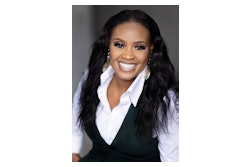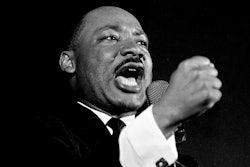 Irene Moore Davis is president of the Essex County Black History Research Society. (Photo courtesy of Irene Moore Davis)
Irene Moore Davis is president of the Essex County Black History Research Society. (Photo courtesy of Irene Moore Davis)Last month in many large and mid-sized cities in Canada, including Windsor, London, Toronto and Montreal, millions of Canadians celebrated what has in recent decades become a highly anticipated annual event: Black History Month.
In Windsor, Black History Month kicked off at the end of January with various events that brought together people from all over the wind-swept city on the Detroit River, including the three main strains of Canada’s Black community: descendants of Canadian and American slaves; descendants of immigrants from the Caribbean, many of whom started arriving in Canada in the early 1960s in response to the country’s needs for skilled and domestic workers; as well as relatively new arrivals from Africa, from countries such as Nigeria, Sudan and Somalia.
Throughout February there were events celebrating people of African descent: films, lectures, art exhibits, author readings of Black children’s books, according to Irene Moore Davis, president of the Essex County Black History Research Society and herself a descendant of people who freed themselves from slavery as well as free people of color who immigrated to Canada during the Underground Railroad era.
Remembering the past
Interest in Black history has been surging in Canada since the early 1950s, inspired in part by a strong interest in Black history that began in the United States in the early 1900s. Organizations such as Canada’s National Council of Negro Women began lobbying for recognition of a period of the year honoring Black history, says Winfried Siemerling, a professor of English language and literature at the University of Waterloo.
In the early 1970s, as Canada became an increasingly diverse country, Prime Minister Pierre Elliott Trudeau laid out a policy of multiculturalism.
Under this policy, Canada would recognize and preserve the growing diversity of its citizens, including language, culture, religion and race. In 1995, prompted by a Black member of the Canadian parliament, Canada’s government officially recognized February as Black History Month.
To many outsiders, Canada has a reputation as a progressive oasis of racial inclusiveness and tolerance—the antithesis of the volatile United States. Canadians are quick to point out their country’s decades-old embrace of multiculturalism and its role in the Underground Railroad and in harboring escaped slaves.
But many critics say this reputation is inflated. They say many Canadian schools and textbooks overlook or completely airbrush the country’s turbulent historical relationship with its people of African descent. They say that too many Canadians are unaware that slavery was once legal in Canada—the first slave was brought to Canada in the early 1600s—and that slavery in Canada persisted for two centuries. They point out that many young Blacks in Canada are underemployed, that racial profiling by police is common in big cities like Toronto, and that Blacks are overrepresented in the prison system and many find it difficult to access jobs in the private sector.
Racial profiling
In recent years, reports of racial profiling, or carding, by law enforcement personnel have gained widespread attention in Toronto, Canada’s largest and most diverse city. In 2012, two reporters from the Toronto Star speculated that, based on their analysis of data, Toronto cops may have stopped, questioned or detained every Black or brown male between the ages of 15 and 24 in some neighborhoods.
“There’s not a big problem with police brutality, but there’s a problem with carding,” says Davis. “There are a lot of young people in Windsor who will say they are unfairly stopped. A lot of people don’t like to discuss that.”
“Very often the Underground Railroad gets hyped,” adds Siemerling, who is also an associate of the W.E.B. Du Bois Institute at Harvard. “But when the [freed or escaped] slaves came to Canada they often faced massive racism. Being in Canada protected them but they faced huge amounts of racism.”
Davis adds that many freed and escaped slaves faced discrimination in practically every facet of life, including education, housing and employment.
“They had dreams of how it would be here but encountered a lot of racism,” she says. “Some decided to stay and make a go of it. Some hightailed it back to the States. A lot of people in Canada were in favor of helping the escaped slaves but when war was over they were like, ‘What are you still doing here?’”
In the Windsor area, she says, missionary schools were set up for Black children.
“No one objected,” she says, adding that her great-great-great grandmother set up a school in 1850 to educate children and adults. But when the time came to place Black children in White schools, there was a widespread furor. “The local authorities would make sure Blacks had their own schools. In rural areas they would let them in but have them sit in separate rooms or in the back and not get them writing instruments.”
Black Canadian history
But some observers also point out that Canada’s relationships with its citizens of African ancestry are more complex than that of the United States in part because of other historic divisions, such as the English and the French and Whites and aboriginal Canadians.
“The Black/White discourse so central to U.S. culture is less essential in Canada because class tensions don’t need to be racialized to be discussed here,” says George Elliott Clarke, E.J. Pratt Professor of Canadian Literature at the University of Toronto and the nation’s poet laureate.
“Racial discourse in Canada began as a question of White English versus White French struggles for power, with each side racializing the other. Then—or simultaneously—it became a question of White settlers versus [indigenous] peoples and Metis [mixed or Native cultures]. That basic dynamic continues to this day where ‘race’ is first about ‘Amerindian’ versus [White] concerns, and then about others.”
Canada’s relationship with people of African descent began in 1628 when slaves started arriving in what was then known as New France. Montreal and Quebec City had ample numbers of slaves. Unlike the United States, many of these slaves were house slaves, says Siemerling.
“In one famous incident in 1734, a Black slave was accused of burning down Montreal,” says Siemerling. “She was hanged.”
Significant slave populations also existed in Nova Scotia and Ontario.
Great Britain wrested control of Canada from the French in the 1760s. In 1783, thousands of freed slaves from the United States were repatriated to Nova Scotia. These former slaves and their families had been promised land and freedom in exchange for fighting on the side of the British during the American Revolution.
Spurred by the hardships they encountered in Nova Scotia, many of the Blacks chose to move again: to a West African settlement that is known today as the Republic of Sierra Leone. Not too long after, large numbers of freed slaves in the United States would take a similar step by relocating to another nearby West African settlement: Liberia.
Slavery ended in Canada nearly 30 years before it ended in the United States.
To be sure, there were similar forms of racism experienced by people of African descent on both sides of the border, particularly in areas of access to education, housing and jobs. But there were also striking differences.
Take violence, for example.
“You didn’t see lynching in Canada,” says Dr. Patrick Coggins, a professor of education and multicultural education at Stetson University in DeLand, Florida, who closely follows issues affecting people of African descent in Canada. He adds that no terrorist organization dedicated to oppressing or killing religious or ethnic minorities sprang up in Canada. “The process of inclusion was much easier and quicker than in the U.S.”
Coggins said he believes that Canada’s low population of Blacks made Blacks less of a threat to White society and significantly changed the dynamics of racial violence that was seen in the United States.
In the post-slavery era of the 19th and 20th centuries, Canada was an attractive destination, not only for freed or escaped slaves from the United States, but also for abolitionists and activists.
“John Brown came to Chatham when he was looking for volunteers for the Harper’s Ferry raid,” says Siemerling. The physician, journalist and abolitionist Martin Delaney lived in Chatham, he adds.
Marcus Garvey was a frequent visitor to Canada and his organization, the Universal Negro Improvement Association, had chapters in Canada.
“Marcus Garvey visited Toronto,” Siemerling says. “[Jazz pianist] Oscar Peterson played for Marcus Garvey when he came to Montreal. He came here quite a bit after being kicked out of the United States.”
Blacks remain a miniscule percentage of Canada’s population, hovering at about 2.9 percent, according to 2011 data. A steadily rising number of Blacks hold high-profile positions. For much of the last decade, Canada’s governor general—the country’s equivalent of a ceremonial president—was a Black woman.
“But on the ground [the] story is much different,” says Siemerling.
Davis says that discussions about race in Canada remain largely superficial. “In Canada everyone [is] encouraged to celebrate their culture,” she says. “But when it comes to serious discussions that go beyond food and watching people dance it is difficult.”
But Coggins says that Canada’s silence about its troubled history presents the country with a great opportunity.
“Canada has [an] opportunity to let people know there was slavery there,” he says. “It’s not taught in the schools. The educational system [also] needs to prepare the next generation of kids … to understand what it means to discriminate against others.”


















